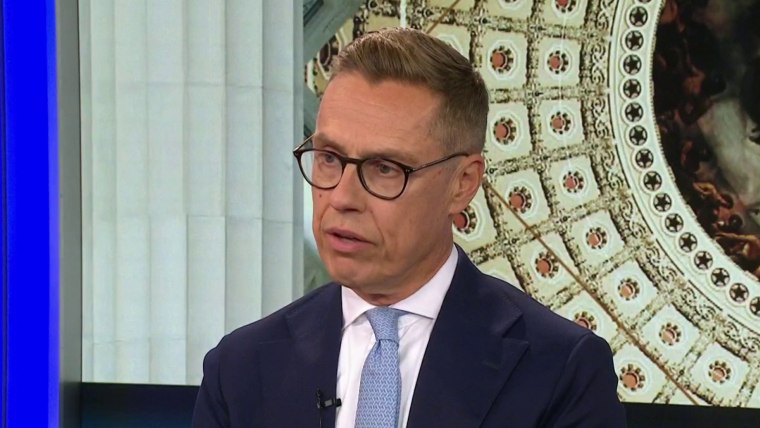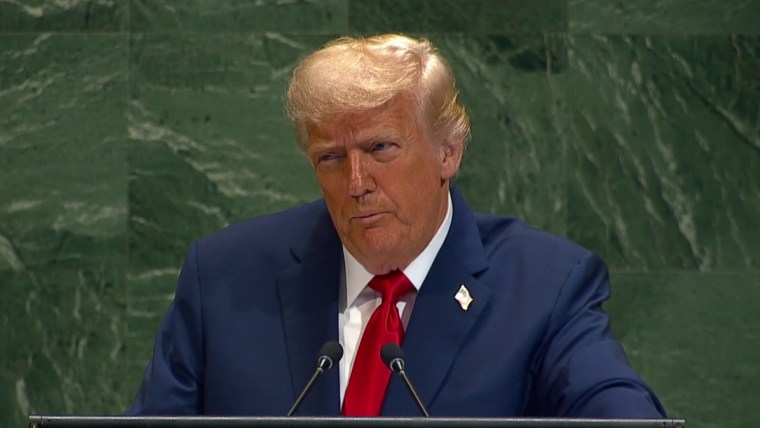In February, President Donald Trump brusquely told Ukrainian President Volodymyr Zelenskyy “You don’t have the cards” to defeat Russia’s invasion of Ukraine. This week, he staked out a brand-new view of the conflict on Tuesday, declaring on Truth Social that Russia is a “paper tiger” and claiming that Ukraine has “great spirit” and “is in a position to fight and WIN all of Ukraine back in its original form” with the support of NATO.
Trump’s startling new pivot caught both Moscow and Kyiv by surprise and prompted Kremlin spokesman Dmitry Peskov to fire back on Wednesday: “Russia is more compared with a bear. There are no paper bears,” he told a Russian radio station. In fact, it’s not just Russia and Ukraine who were caught unawares. Nobody really knows what this means.
If Trump thinks he’s slyly pressuring Russia or Ukraine to accept a peace deal through his seeming incoherence, he’s wrong.
Trump has sent mixed signals about his position on the war throughout his second term. At times he has publicly scolded Zelenskyy for being too determined to continue fighting. Other times, he has criticized Russian President Vladimir Putin, such as when he called him “absolutely crazy” after a particularly heavy bombardment of Ukrainian cities. In just the span of a month this summer, Trump greenlit a new batch of arms sales to NATO for deployment in Ukraine while threatening sanctions against Russia — and then subsequently rolled out the red carpet for Putin at a summit in Alaska during which, according to Trump, they had a “warm” conversation and agreed on the point of Ukraine’s giving up land to Russia.
It’s increasingly difficult to suss out where Trump fundamentally stands on the Ukraine war or predict what he’ll say or do next. But if Trump thinks he’s slyly pressuring Russia or Ukraine to accept a peace deal through his seeming incoherence, he’s wrong. He’s most likely achieving the opposite.
There are three potential ways to parse Trump’s language — some of which he also used during a surprisingly friendly sit-down with Zelenskyy at United Nations headquarters in New York on Tuesday.
The first possibility is that it could mean nothing at all. One must always consider this possibility with a president who openly admits that “I’m not so careful with what I say” and views truth as something to distort at will. Given that Trump hasn’t announced any new policy positions, it’s certainly possible that he will soon return to any of the rhetorical positions on the war he has held before.
The second possibility is that Trump’s language is an attempt to distance him entirely from trying to broker a peace deal between Ukraine and Russia, because he believes it’s too difficult to achieve. Trump has already met with Putin and Zelenskyy repeatedly but isn’t yet any closer to a peace deal, and perhaps he’s feeling bored or pessimistic.

The end of Trump’s Truth Social post announcing his pivot could support this interpretation. “In any event, I wish both Countries well. We will continue to supply weapons to NATO for NATO to do what they want with them. Good luck to all!” he wrote. Trump sounds resigned in tone about diplomatic prospects and telegraphs a broad continuation of a Bidenesque Ukraine policy: arming Ukraine and formally co-signing Ukraine’s maximalist position of total expulsion of Russia. But this position also leaves open the possibility that Trump’s mood could change and that if he were struck by inspiration or a new wave of energy, he could choose to lean back into trying to resolve the conflict.
Third, Trump might view his language of support for Ukraine and his attacks on Russia — whom he put down for “fighting aimlessly for three and a half years” — as a way to pressure Moscow. Trump appears to lack the stomach for heavy new sanctions, and pleas like “Vladimir, STOP!” didn’t work. But perhaps he thinks taunting Russia could pressure it to take negotiations seriously. This possibility strikes me as both plausible as an imagined strategy and highly unlikely to work.
Moscow places far more importance on cobbling together some kind of “win” in Ukraine than Washington does. And given that Russia controls about a fifth of Ukraine’s territory, it has a lot of leverage. Why would Putin give up instead of just wait for Trump’s mood to change again, particularly given that Trump has resisted calls to impose harsh sanctions on Russia? “I have no doubt — he will come back. He always comes back,” former Russian President Dmitry Medvedev wrote on X.
The third scenario raises the possibility that Trump thinks of himself as enacting a mild kind of “madman theory” — trying to intimidate or coerce an adversary into concessions by signaling a willingness to do anything, including behaving irrationally. In this case, the "madness" would be Trump’s forcing Moscow to wonder whether he really has abruptly given up on negotiations and will stick aggressively by Ukraine's side. But this seems ill-fated, because there are huge limitations on how much the U.S. can intimidate Russia: Trump obviously (and wisely) doesn’t want the U.S. to directly enter the war, and Russia has a huge manpower advantage over Ukraine and has invested tremendous resources into staying the course. It’s only reasonable for Putin to keep calling Trump’s bluff.
Whatever course Trump wishes to pursue with the war in Ukraine, it’s in his interest to remain consistent and clear and to settle on a disciplined agenda. This would make the stakes and the window of possible outcomes clear to both Russia and Ukraine and facilitate a peace process. But it would require a kind of resolve that Trump has shown little appetite for except when it comes to his own aggrandizement.

